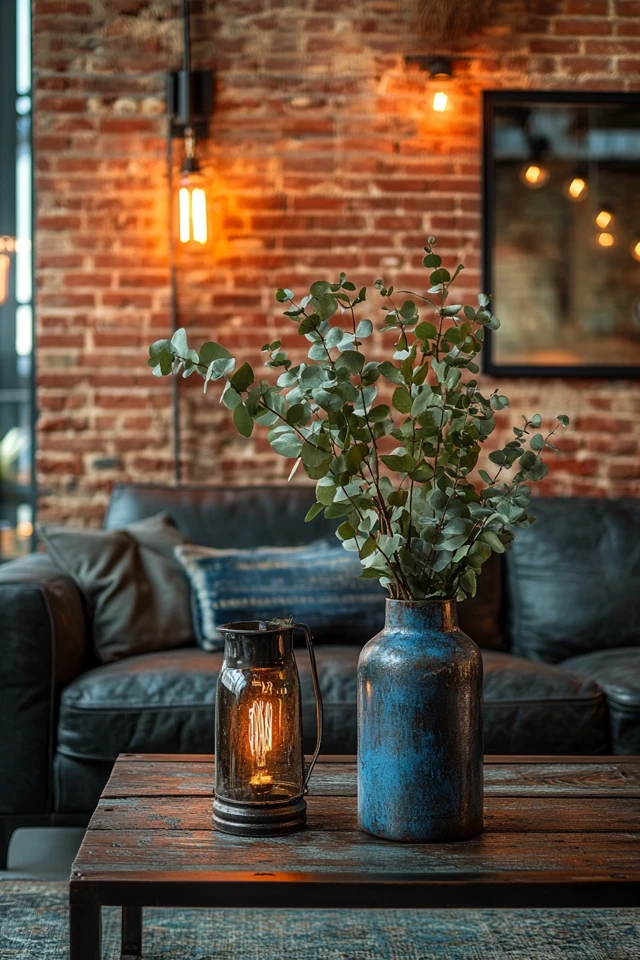The industrial design style blends raw, rugged materials with sleek, modern touches to create a space that feels both edgy and inviting. Born out of converted warehouses and urban lofts, this aesthetic has become a favorite for homeowners and interior designers alike. Think exposed brick, reclaimed wood, metal finishes, and open spaces—a mix of vintage charm and contemporary edge.
Whether you’re starting from scratch or adding industrial elements to your existing home, this guide will help you achieve the perfect industrial look that’s chic, timeless, and full of character.
1. Start with a Neutral, Earthy Color Palette
The foundation of any industrial-style home lies in its color palette. Neutral, earthy tones keep the look cohesive and allow raw materials to shine.
Color Palette Ideas:
- Gray and Charcoal: Set the stage for a modern, urban feel.
- Brown and Taupe: Add warmth through wood tones and leathers.
- Black: Use for bold accents and high contrast.
- White: Keep spaces light and open, balancing the darker industrial elements.
Pro Tip: Incorporate black or charcoal walls sparingly to create dramatic focal points without overwhelming the space.
2. Embrace Raw and Reclaimed Materials
The essence of industrial style is its use of raw materials that highlight natural beauty and imperfections. These materials create texture, visual interest, and authenticity.
Key Materials to Include:
- Exposed Brick: Leave brick walls bare or paint them white for a clean, loft-like look.
- Reclaimed Wood: Use for dining tables, shelving, or accent walls to add warmth and character.
- Metal Finishes: Incorporate steel, iron, or brass for lighting, furniture, and decor.
- Concrete: Perfect for floors, countertops, or accent walls—raw and functional.
- Leather: Worn or distressed leather chairs and sofas add a vintage touch.
Pro Tip: Reclaimed wood and metal elements can be DIY-ed or sourced from salvage shops for an authentic, budget-friendly option.
3. Incorporate Open Spaces and High Ceilings
One hallmark of industrial interiors is the sense of openness. Originally inspired by warehouses and factories, the industrial style thrives on open-concept layouts and high ceilings.
Ways to Achieve an Open Feel:
- Knock down walls (where possible) to create open living areas.
- Use large windows or glass partitions to let light flow through the space.
- Minimalist Furniture: Avoid clutter and opt for streamlined pieces to maintain the openness.
- Add large-scale decor like oversized clocks or art to complement the height.
Pro Tip: If you don’t have high ceilings, faux beams or light fixtures hung high can create the illusion of space.
4. Use Industrial-Style Lighting
Lighting plays a key role in achieving the industrial look. Opt for fixtures that are bold, functional, and inspired by vintage factory designs.
Industrial Lighting Ideas:
- Pendant Lights: Hang metal or glass pendants with black or brass finishes above kitchen islands or dining tables.
- Edison Bulbs: Exposed filament bulbs give a warm, vintage glow.
- Caged Fixtures: Look for lights with wire or metal cage designs for a rugged edge.
- Track Lighting: Functional and versatile, perfect for highlighting artwork or architectural features.
- Floor Lamps: Use tripod or oversized industrial lamps for dramatic flair.
Pro Tip: Mix lighting heights—pendants, sconces, and floor lamps—to add depth and visual interest.
5. Mix Modern and Vintage Furniture
A perfect industrial space balances old and new. Vintage pieces add authenticity, while modern furniture keeps the look fresh and functional.
Furniture Ideas:
- Leather Sofas: A brown or black distressed leather sofa is a must-have industrial staple.
- Metal and Wood Tables: Combine reclaimed wood tops with iron or steel legs for a rugged look.
- Industrial Stools: Use metal stools with worn finishes for seating at bars or counters.
- Steel-Framed Shelving: Open metal shelves are perfect for displaying books, plants, and industrial decor.
- Vintage Finds: Hunt for old factory carts, trunks, or school chairs for unique character.
Pro Tip: Keep furniture simple and sturdy—functionality is key in industrial design.
6. Add Statement Industrial Decor
Industrial decor leans on bold, functional, and vintage-inspired pieces that celebrate the beauty of form and function.
Key Decor Ideas:
- Oversized Wall Clocks: Large metal or wooden clocks make dramatic, functional statement pieces.
- Metal Accents: Use galvanized steel planters, metal trays, or iron hooks for subtle industrial touches.
- Vintage Signs or Art: Incorporate old signage, typography art, or black-and-white photography.
- Wire Baskets: Practical and stylish for storage in kitchens, bathrooms, or living areas.
- Exposed Pipes: Use as shelving brackets or curtain rods to emphasize the rugged aesthetic.
Pro Tip: Stick to minimal, large-scale decor for a clean yet impactful look.
7. Introduce Textures Through Fabrics
To balance the raw materials, incorporate soft textures that add warmth and comfort to the space.
Industrial Textiles to Use:
- Canvas: Neutral canvas curtains or upholstery pair beautifully with metal finishes.
- Burlap or Linen: Perfect for rustic, understated touches.
- Leather: Chairs, ottomans, or sofas in aged leather add rich texture.
- Chunky Knits: Soft knit throws or cushions provide a cozy contrast to hard materials.
- Rugs: Use jute, sisal, or faded Persian rugs to add depth without overpowering the space.
Pro Tip: Layer rugs over wood or concrete floors for warmth and a finished look.
8. Use Open Shelving for Storage and Style
Industrial spaces favor open storage solutions that are both practical and stylish. Open shelving allows you to display curated decor while keeping essentials within reach.
Open Storage Ideas:
- Metal Pipe Shelving: DIY shelves made from iron pipes and wood planks.
- Wall-Mounted Racks: Use in kitchens for displaying utensils, cookware, or mugs.
- Floating Wooden Shelves: A mix of reclaimed wood and metal brackets.
- Freestanding Bookcases: Tall, steel-framed shelves make a strong industrial statement.
Pro Tip: Style shelves with a mix of books, plants, and vintage items for a curated, lived-in look.
9. Layer in Greenery
Plants bring life and softness to the industrial style, creating a beautiful contrast with rugged materials like metal and wood.
Best Plants for Industrial Interiors:
- Snake Plant: Adds height and structure with minimal maintenance.
- Fiddle Leaf Fig: Large, leafy greens create a striking focal point.
- Pothos or Ivy: Use trailing plants on open shelves or hanging planters.
- Cacti and Succulents: Perfect for a modern, low-maintenance touch.
Pro Tip: Use metal planters, galvanized pots, or reclaimed wood containers to maintain the industrial vibe.
10. Don’t Be Afraid to Go Bold
Industrial design is all about celebrating the bold, unfinished, and unique. Don’t shy away from statement pieces that emphasize the rugged charm of this style.
Bold Industrial Statements:
- Black Window Frames: Create contrast and an urban loft aesthetic.
- Exposed Beams: Leave ceiling beams raw or paint them black for a striking look.
- Large Artwork: Oversized black-and-white prints or abstract art add personality.
- Industrial Sliding Doors: Use barn doors with metal hardware for a functional, stylish touch.
Pro Tip: Balance bold features with softer accents to prevent the space from feeling too stark or cold.
Picture Gallery
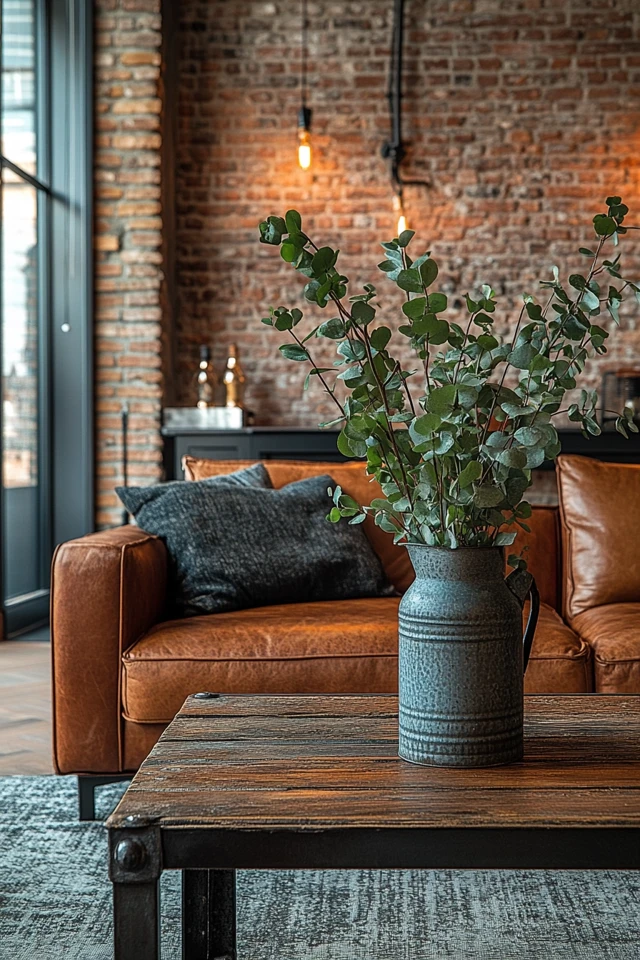
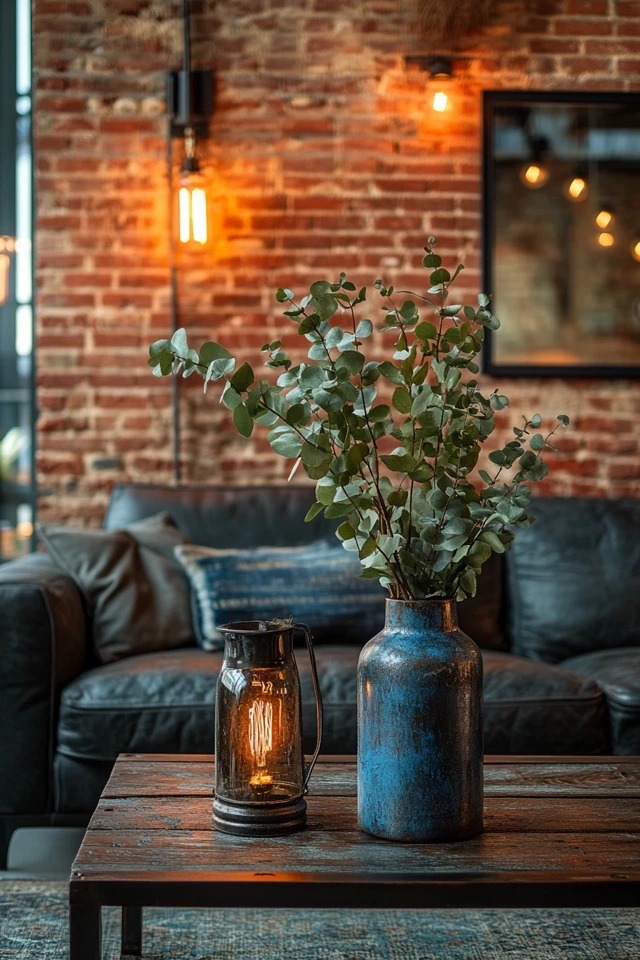
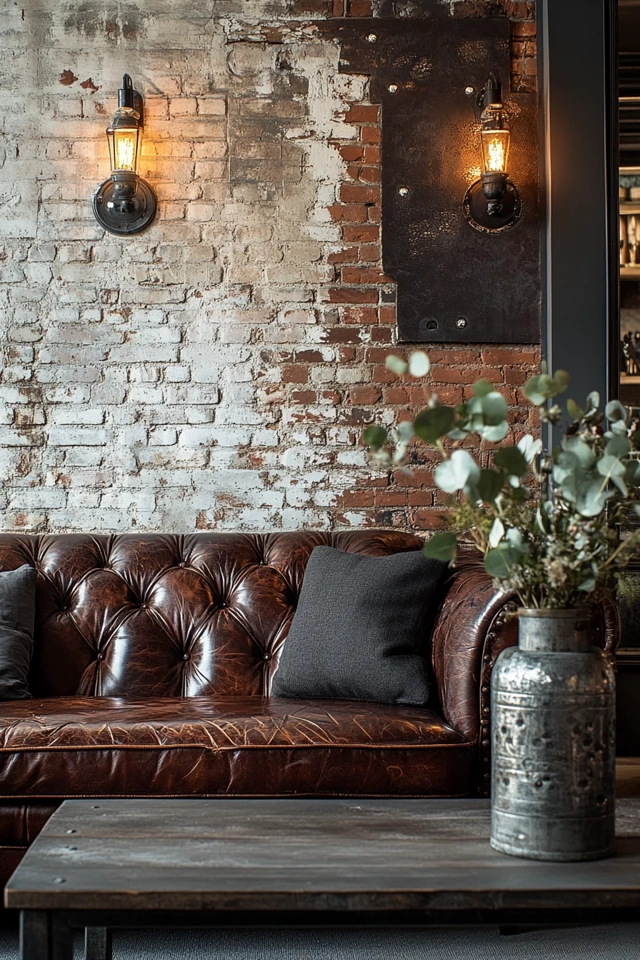

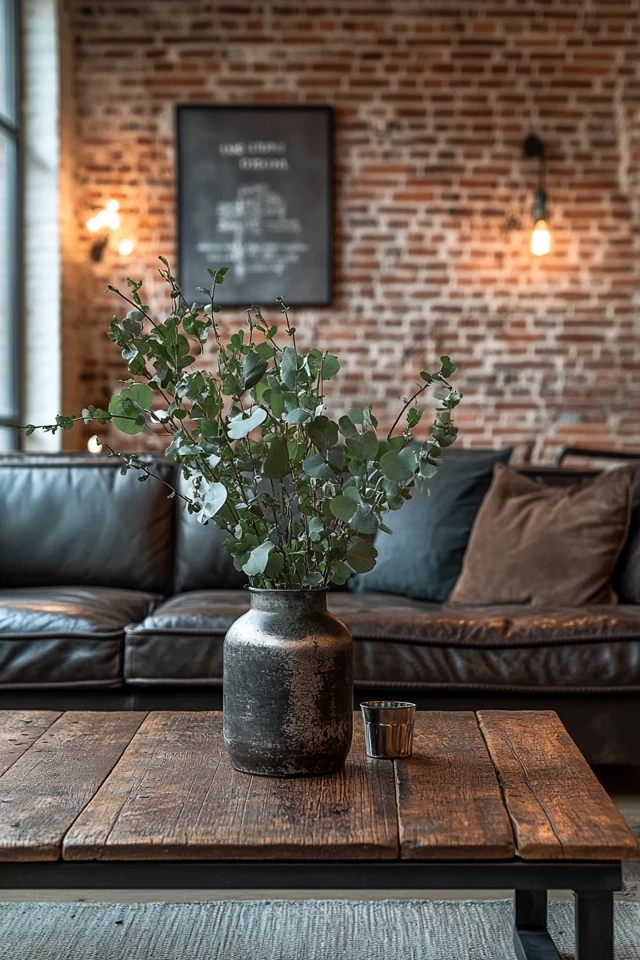
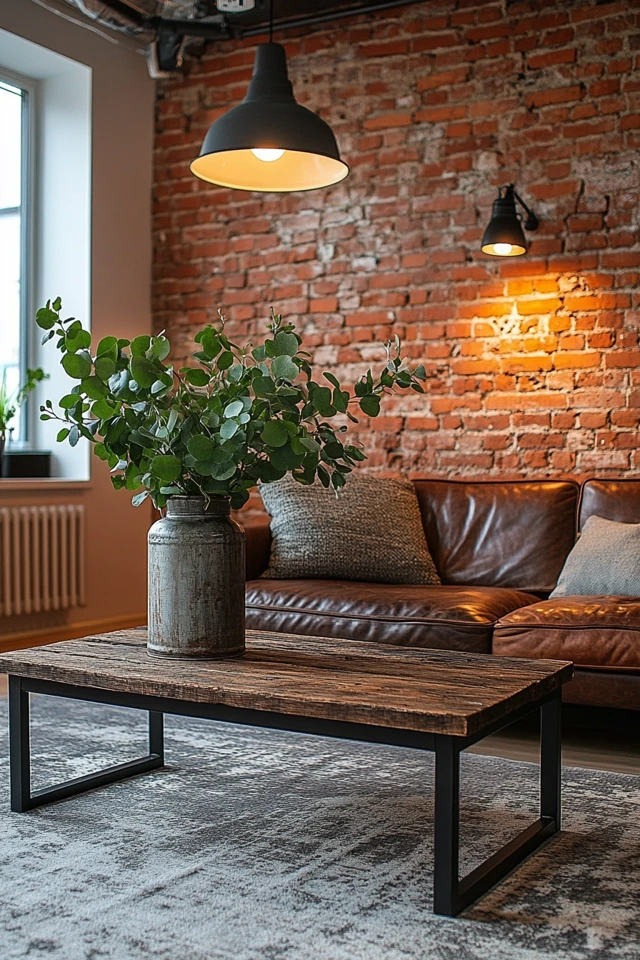
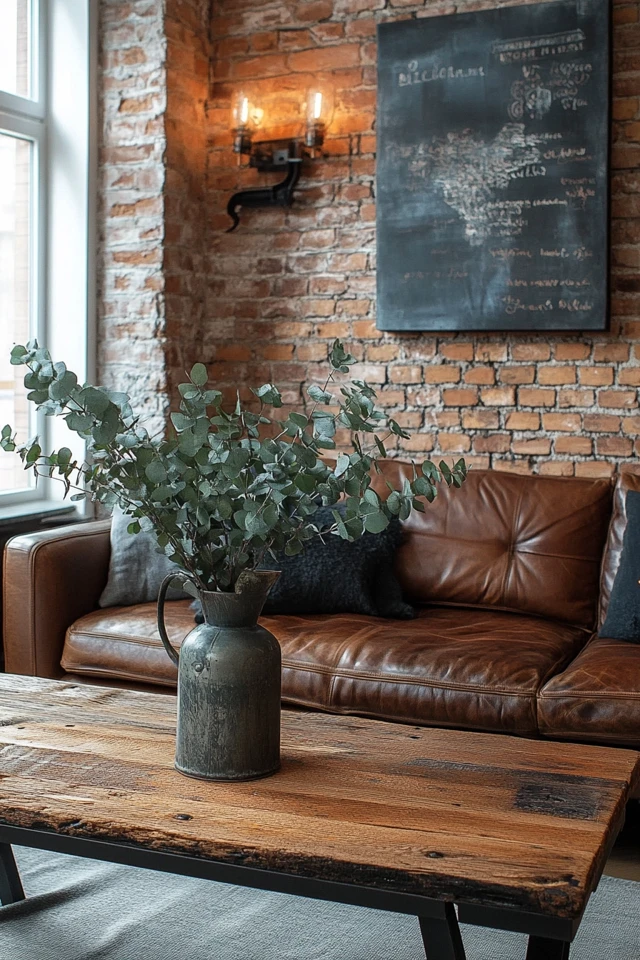
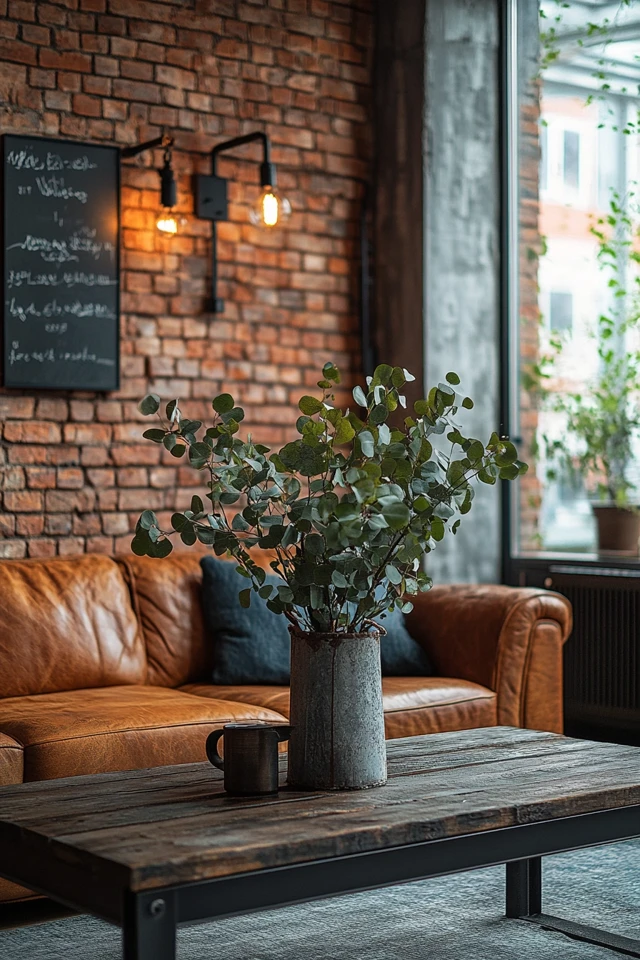
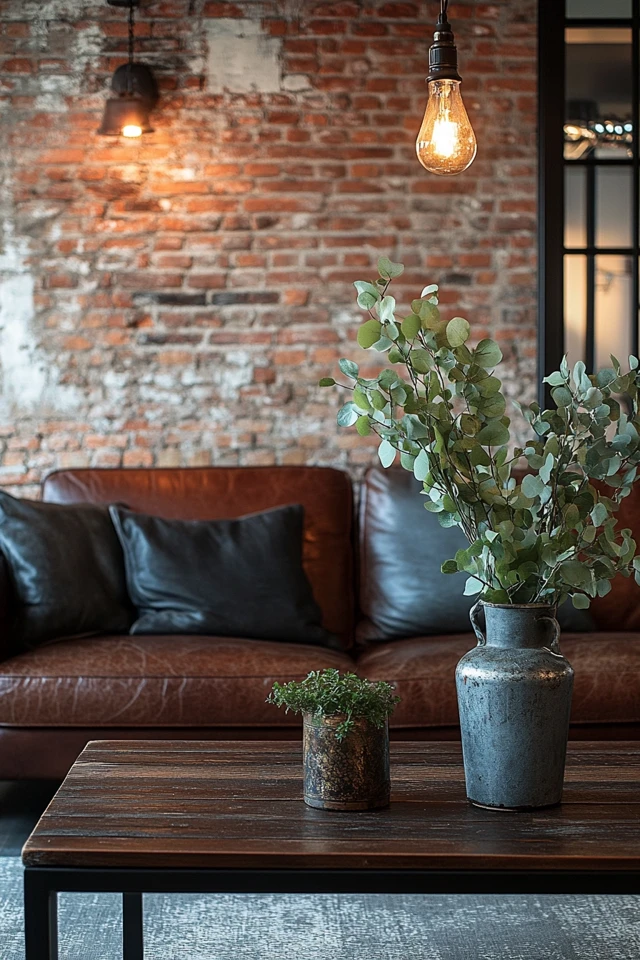
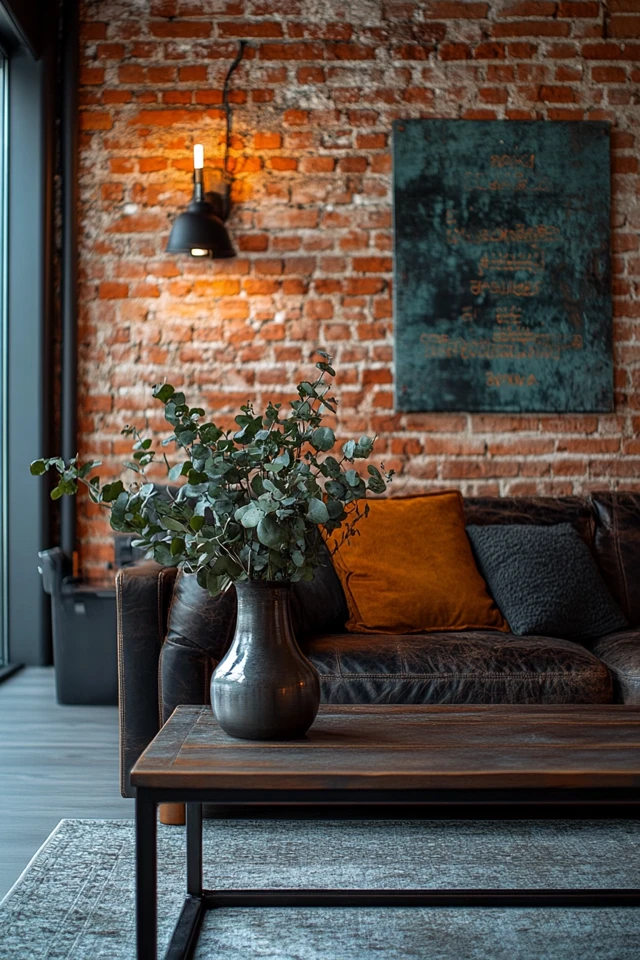
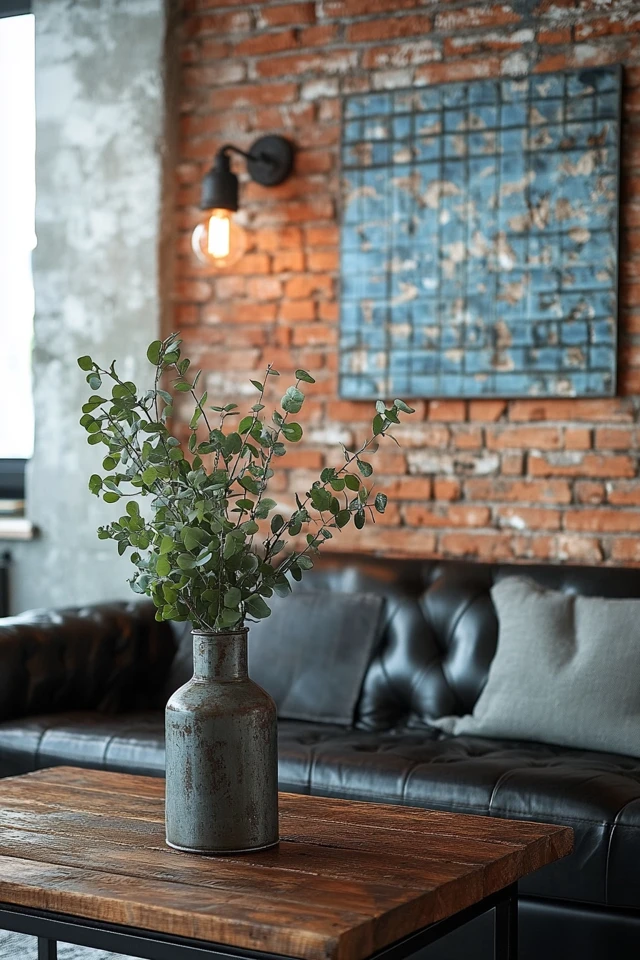

Conclusion
Achieving the perfect industrial look is all about blending raw, rugged materials with clean lines and modern functionality. Start with a neutral color palette, incorporate reclaimed wood, metals, and concrete, and balance the edginess with soft textiles and greenery. Statement lighting, vintage furniture, and curated decor tie it all together, creating a space that feels bold, stylish, and uniquely yours.
Whether you’re outfitting an urban loft or transforming a traditional home, these tips will help you bring the industrial style to life in a way that’s both authentic and inviting.
FAQ
1. What colors are best for industrial design?
Stick to neutral tones like gray, black, white, and brown. Earthy hues and muted shades work well as accents.
2. How can I add industrial style to a small space?
Use open shelving, mirrors to reflect light, and minimalist furniture to create an airy, open feel.
3. What materials define industrial style?
Exposed brick, reclaimed wood, concrete, metal finishes, and leather are key materials for an industrial aesthetic.
4. How do I soften an industrial space?
Incorporate soft textiles like canvas, linen, and faux fur. Add plants and warm lighting to create balance.
5. Where can I find industrial-style furniture and decor?
Look for vintage shops, flea markets, or DIY projects. Many retailers now offer industrial-inspired pieces, including lighting and furniture.

